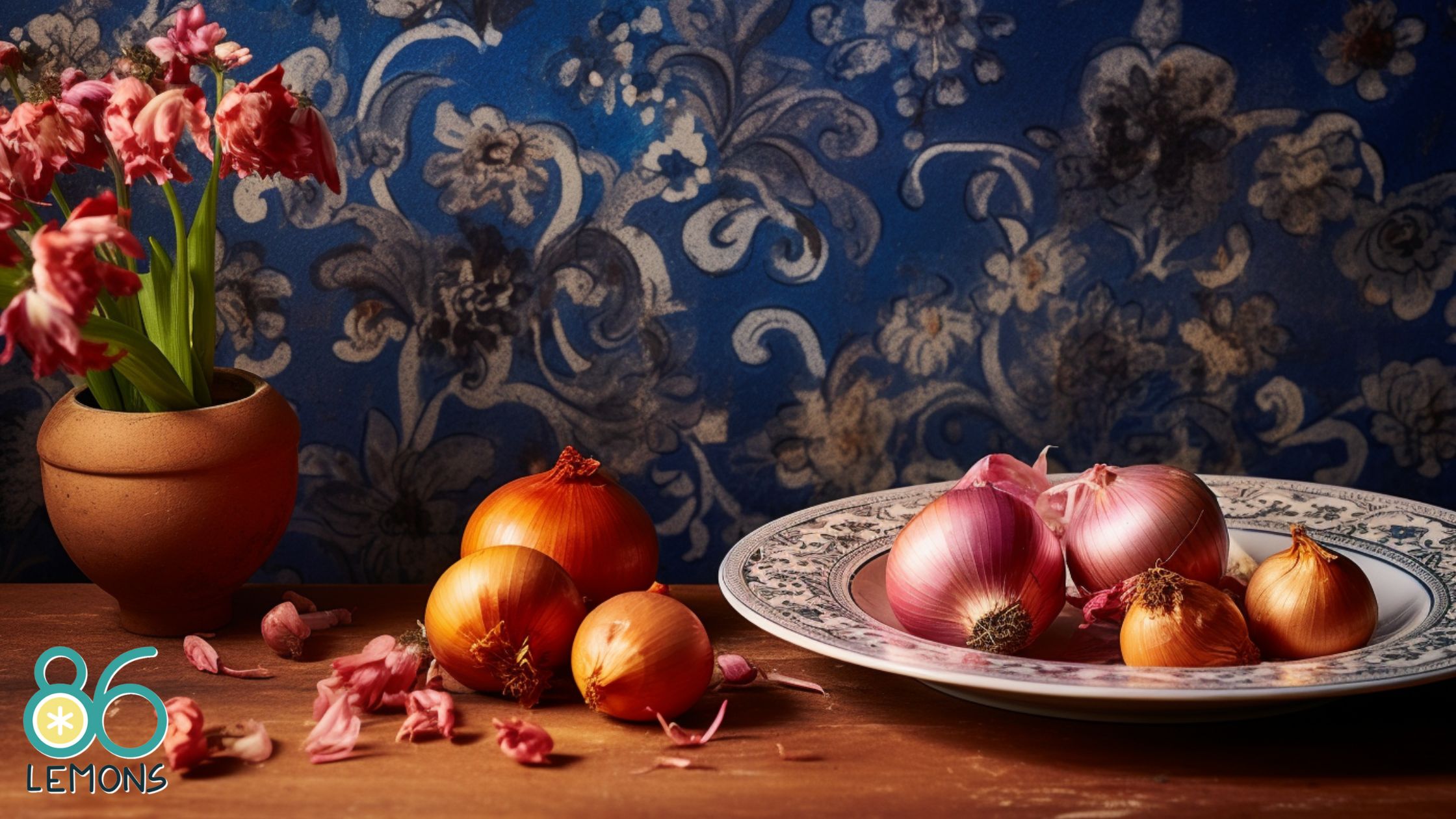Fajitas are one of my favorite Mexican dishes, and I know many of you share my excitement for this delicious, versatile meal. But did you know that the onion you choose can significantly impact the flavor of your fajita? It’s true! Selecting the best onions for your fajitas can bring your dish to a new level.
There’s no one-size-fits-all answer to choosing the right onion for your fajitas. You can go for the traditional white or yellow onions, offering a more savory option, or experiment with sweet onions like Vidalia or Walla Walla to add a subtle sweetness to your dish.
Give your best onion chopper some practice with some of our picks. Selecting the best onions for fajitas can elevate the flavor and make your taste buds dance with joy.
Key Takeaways
- Choosing the right onion can enhance the flavor of your fajitas
- Sweet and savory options like Vidalia and white onions offer different taste profiles
- Experimenting with complementary vegetables and cooking techniques elevates your fajita game
Choosing the Right Onion
Yellow Onions: The All-Around Favorite
Oh, I can’t tell you enough how much I love yellow onions for my fajitas! Their balance of savory flavor and natural sugars make them my all-around favorite.
When cooked, they tend to caramelize beautifully, which adds a lovely depth of flavor to the dish. You cannot go wrong with yellow onions if you want to enhance your fajitas without overpowering them.
White Onions: For the Bold
I reach for white onions when I want my fajitas to pack a punch. These guys are sharper and more intense than their yellow cousins, adding a more assertive flavor.
While they may not caramelize as well, they have their appeal when you crave something bold and powerful in your fajita.
Red Onions: A Touch of Sweetness
Sometimes, I’m in the mood for a bit of sweetness and a vibrant pop of color in my fajitas, and that’s when I go for red onions. They have a milder taste than white onions, with a hint of sweetness that beautifully complements the other ingredients in fajitas. Plus, they can look stunning in any presentation!
Sweet Onions: Mild and Succulent
I have a soft spot for sweet onions in my fajitas. They are milder compared to yellow, white, and red varieties and have a tender succulence you may fall in love with. Sweet onions are perfect when you don’t want any pungent flavors to steal the spotlight from the other ingredients in your fajitas.
Unconventional Choices: Vidalia and Walla Walla Onions
Now, let’s talk about some unconventional but delightful choices for fajitas: Vidalia and Walla Walla onions! These sweet onions bring an almost fruity flavor to the mix, and they caramelize like a dream, thanks to their high natural sugar content.
So there you have it! These are my top onion picks for fajitas arranged in helpful categories. Next time you’re about to whip up a batch, consider trying these different onions and find your perfect match. Happy cooking!
Prepping Your Onions
Cutting Techniques: Finding the Perfect Slice
I love making fajitas, and the secret to mouth-watering fajitas has to be perfectly sliced onions. Now, let me share my technique for slicing onions that works like a charm!
- Peel the onion: Start by cutting off the top of the onion and then peeling away the outer skin.
- Slice in half: Place the onion flat side down and slice it in half from top to bottom.
- Make angled cuts: Now, with the flat side down, make angled cuts along the onion, keeping the slices about 1/4 inch thick.
- Separate onion layers: Break the layers apart after slicing, and you’ve got perfectly cut onions for your fajitas!
Caramelizing Onions for Enhanced Flavor
If you want to take your fajitas to the next level, consider caramelizing your onions before adding them. Caramelized onions bring an unbeatable depth of flavor to fajitas. Here’s how I like to caramelize my onions:
- Preheat the pan: Start with a large pan and preheat it over medium heat.
- Add oil and onions: Add a couple of tablespoons of oil (I prefer olive oil), and then add your sliced onions.
- Cook and stir: Make sure to stir the onions often and simmer until they become soft and golden brown. This process usually takes 15-20 minutes, depending on the heat.
- Deglaze the pan: Once your onions are caramelized, you can deglaze the pan with a small amount of water, stock, or even a splash of vinegar to help bring out the flavors in the onions even more.
With these cutting techniques and the added flavor of caramelization, your fajitas will be bursting with fantastic taste. Now, grab your onions, and let the fajita magic begin!
Complementary Vegetables and Spices
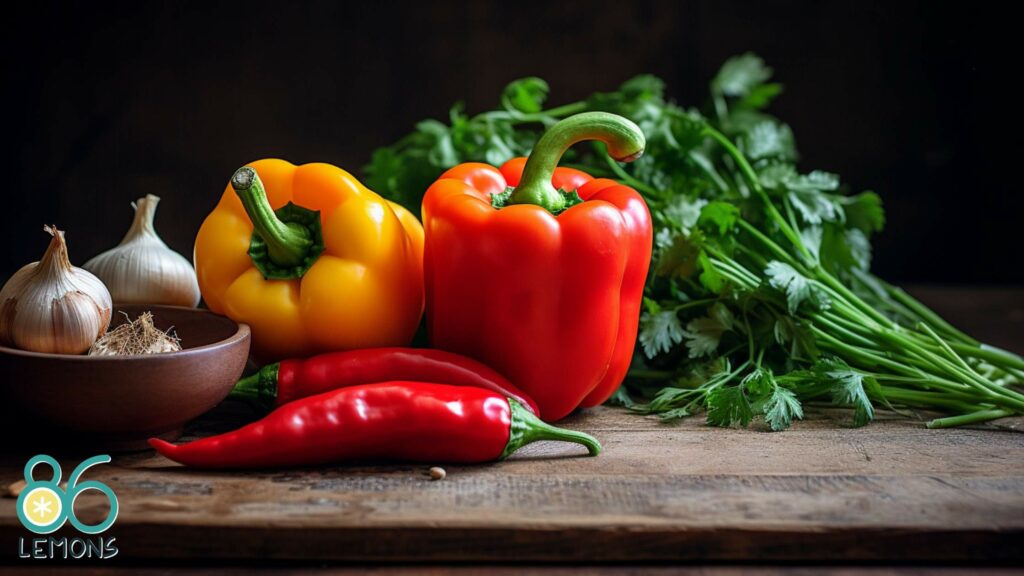
Bell Peppers: The Vivid Companion
I love incorporating bell peppers into my fajitas! They’re an essential companion for the best onions for fajitas, adding a burst of vivid color and a satisfying crunch that complements them perfectly.
You can use any combination of green, red, yellow, or orange bell peppers, but I prefer a mix for that eye-catching presentation. Sauté them with the onions until they’re tender but still have a little bite.
Garlic and Cilantro: Aromatic Additions
Fajitas wouldn’t be the same without the beautiful aromas of garlic and cilantro. I like adding fresh minced garlic for that bold, spicy flavor when preparing my fajita veggies.
I toss some freshly chopped cilantro at the end for a refreshing finishing touch. Its bright, zesty taste ties everything together, making the whole dish sing.
Spice it Up: Cumin, Chili Powder, and More
To create the perfect balance of flavors in my fajitas, I rely on a blend of spices that I carefully mix:
- Cumin: Earthy, warm, and just a little bit spicy, cumin is a must-have ingredient.
- Chili Powder: This versatile blend adds a touch of smokiness and the perfect level of spiciness.
- Paprika adds a subtle sweetness and a beautiful reddish hue to the mix.
- Garlic Powder: I sprinkle in some garlic powder for more garlic goodness.
- Oregano: A pinch of oregano deepens the flavor and adds a lovely herbal hint.
Adjust the amounts of each spice to your taste, as fajitas are an incredibly customizable dish. You can dial up the heat or keep things mild, and no matter what, the mix of onions, bell peppers, and all these spices will result in a beautifully flavorful fajita experience!
Cooking Techniques for Perfect Fajitas
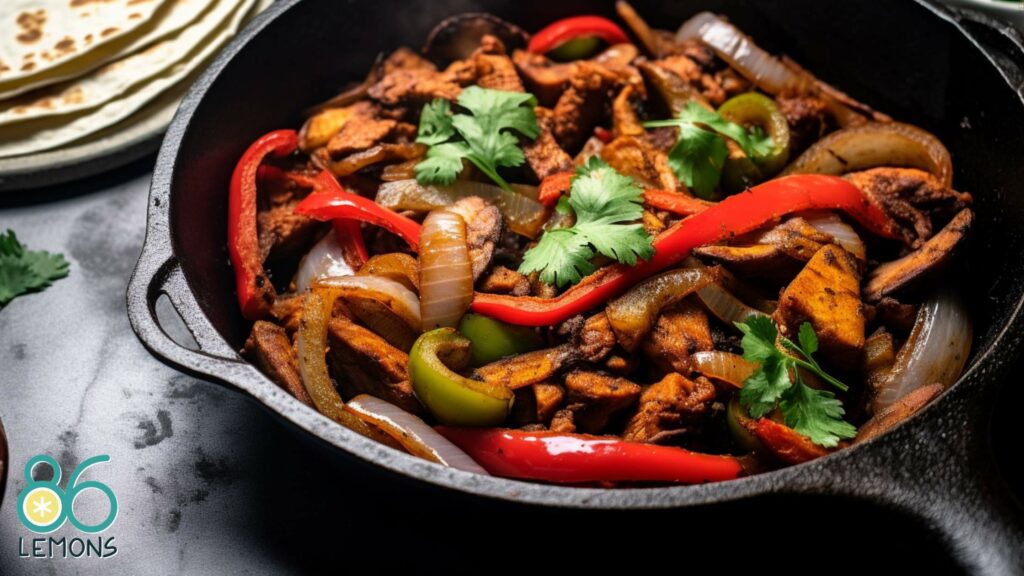
Saute or Grill: Mastering the Heat
I can’t help but get excited when it comes to fajitas! The key to cooking perfect fajitas lies in mastering the heat. Controlling heat is essential when you sauté or grill your onions, peppers, and proteins.
I prefer using a high heat to get a nice char on my ingredients without overcooking them. To achieve this, I preheat my skillet or grill for a few minutes before adding the elements.
Here are some tips on sautéing and grilling for perfect fajitas:
- Heat your skillet or grill to medium-high
- Brown the protein substitute (vegan chicken should work)
- Add the onion and cook for 2-3 minutes or until translucent.
- Stir in peppers and cook for another 3-4 minutes
Remember, don’t overcrowd the skillet or grill. Give the ingredients enough space to cook evenly.
Oil and Seasonings: Getting the Mix Right
The choice of oil and seasonings in fajitas is crucial for getting the flavor profile right. I’ve found that olive and vegetable oil work exceptionally well with fajitas. Olive oil adds a distinct flavor, while vegetable oil is neutral, allowing the seasonings to shine.
For that quintessential fajita flavor, I mix a combination of fajita seasoning, cayenne pepper, and ground cumin. The cayenne pepper gives a spicy kick, while the cumin brings a warmth that balances it out. Here’s a simple fajita seasoning mix you can make at home:
| Ingredient | Quantity |
|---|---|
| Chilli Powder | 1 tablespoon |
| Paprika | 1 tablespoon |
| Cayenne Pepper | 1/2 teaspoon |
| Ground Cumin | 1 teaspoon |
| Garlic Powder | 1/2 teaspoon |
| Onion Powder | 1/2 teaspoon |
| Salt | 1 teaspoon |
| Ground Pepper | 1/2 teaspoon |
To bring out the best in these flavors, I put the seasoning mix onto my proteins before browning them, and I also sprinkle it onto the onions and peppers as they cook to create a cohesive burst of flavor in every bite.
With these techniques, you’re sure to impress your friends and family with the most delicious fajitas they’ve ever tasted! Get cooking, and let the flavors transport you to a festive Mexican fiesta!
Fajita Assembly & Serving Suggestions
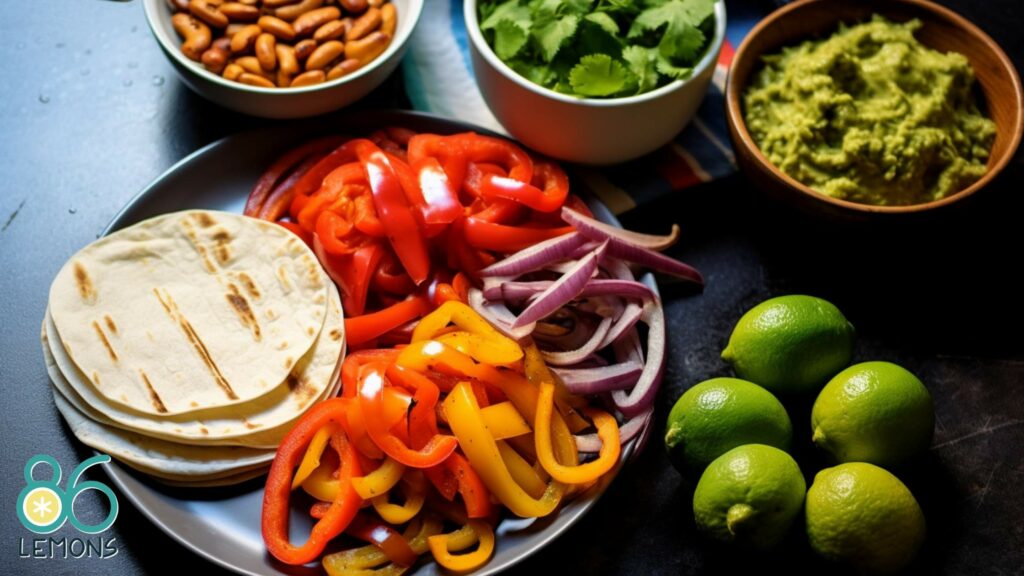
Choosing Tortillas: Flour vs. Corn
I love fajitas, and when it comes to tortillas, there are two main options: flour and corn!
Flour tortillas are softer and more prominent, which makes them perfect for wrapping up all those delicious fajita fillings. Using the best tortilla press for flour tortillas also makes it easier to control serving sizes.
On the other hand, corn tortillas are more minor, slightly stiffer, and have a more distinct flavor. I enjoy both types of tortillas, but if you’re making a vegetarian fajita, corn tortillas might add a little extra flair!
Toppings Galore: Cheese, Salsa, and Beyond
One of the most exciting parts about fajitas is all the toppings you can add! Traditional toppings include salsa, sour cream, and vegan guacamole. If you’re a cheese fan like myself, sprinkle some shredded Mexican cheese. I like to add a squeeze of fresh lime juice for a tangy twist.
Here’s a list of my favorite toppings to try:
- Shredded lettuce
- Diced tomatoes
- Sliced jalapeños
- Chopped green onions
- Cut green and red bell peppers.
Don’t be hesitant to get creative with your fajitas! The sky’s the limit regarding toppings.
Plating Like a Pro: Presentation Tips
We always eat with our eyes first, so presenting your fajitas beautifully is essential! Here are a few tips to make your plate look Tex-Mex restaurant-worthy:
- Layering: Start by placing a tortilla on your plate, then add your veggies and a generous helping of toppings. Fold the tortilla half like a taco, or wrap it up like a burrito.
- Garnish: Add a dollop of sour cream, guacamole, and salsa beside or on the fajita. Don’t forget a wedge of lime for that extra zing!
- Sides: Include sides like refried beans and rice on the plate or arrange them in small bowls for sharing. Consider this Brazilian rice and beans recipe.
- Add color: Use brightly colored ingredients like red and green bell peppers, green onions, and lime wedges to make your plate pop!
So there you have it! My tips for assembling and serving incredible fajitas. Now, create some fantastic, mouth-watering fajitas that everyone will love!
Tips for Dietary Preferences
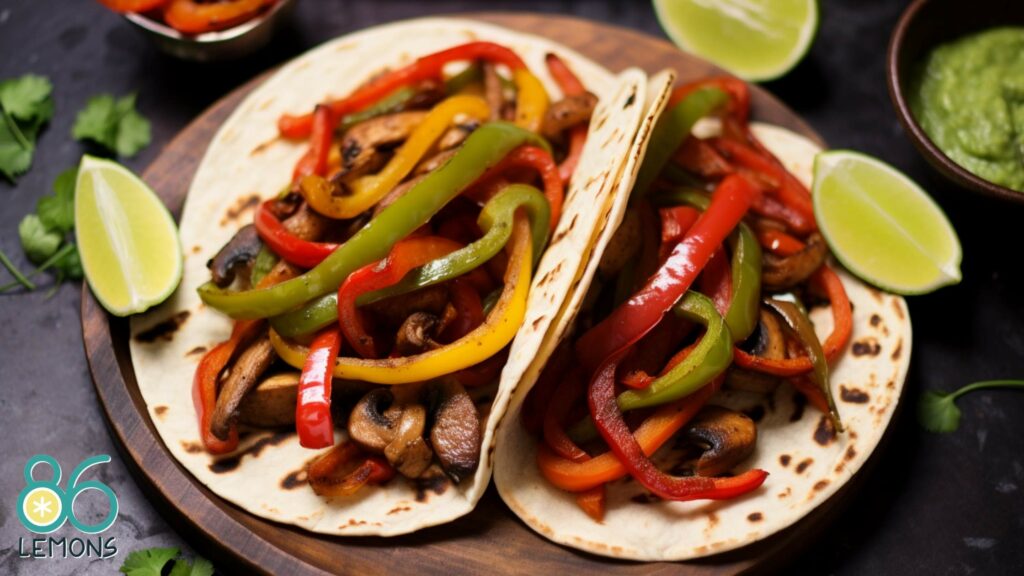
As a die-hard fajita enthusiast, I’m excited to share that you don’t have to be a meat eater to enjoy delicious, flavorful fajitas! Vegetarian fajitas are just as mouth-watering and satisfying as their meaty counterparts.
To make a fantastic vegetarian fajita, replace traditional fajita meat with an assortment of nutrient-dense, colorful vegetables. Some excellent options are:
- Bell peppers: Red, yellow, or green are all fantastic for fajitas!
- Mushrooms: Button, portobello, or shiitake mushrooms add a rich, earthy flavor.
- Zucchini: A slightly sweet, tender addition to your veggie mix.
- Onions: As mentioned in our search results, white onions, yellow onions, and red onions are excellent choices.
Remember to marinate the veggies with your favorite fajita seasoning, and use a sizzling hot cast-iron skillet to achieve that classic fajita char!
Meal Prep and Storage for Fajita Fans
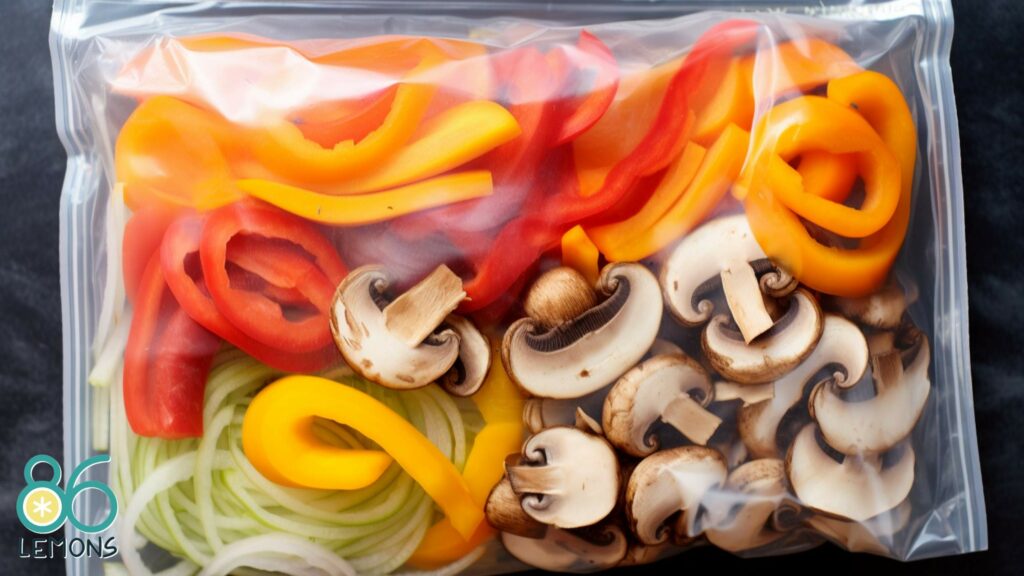
If you’re like me, craving fajitas regularly, meal prep can be a lifesaver. Prepare all your ingredients in advance and have protein and veggie portions ready! Here are a few tips to help make your fajita meal prep a breeze while maintaining the flavors you love:
- Marinate ahead of time: You can store your veggies in the freezer for up to three months. When ready, thaw it in the refrigerator and cook as usual.
- Pre-slice veggies: Slice onions and peppers in an airtight container to limit respiration and transpiration, then store them in the refrigerator for up to five days. This will make your cooking process much quicker.
- Mix spices in advance: Combine all your fajita spices in a small container to season quickly and easily during cooking.
- Store separately: After prepping your ingredients, store your veggies and tortillas separately to maintain freshness and prevent them from getting soggy.
Enjoy your homemade fajitas without the hassle, and indulge in deliciousness at your convenience!

